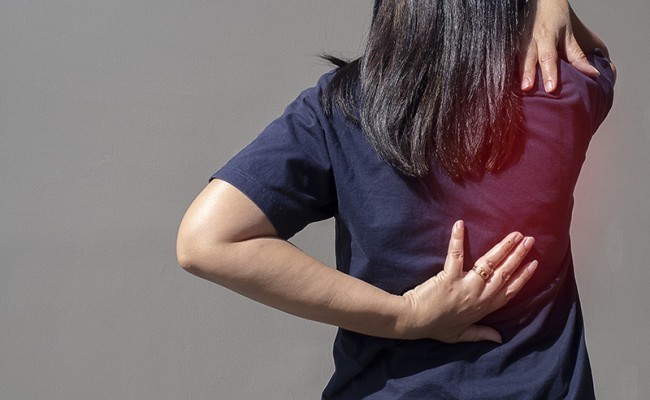
Scapular Dyskinesis
- 09/01/2023
What is Scapular Dyskinesis?
Scapular dyskinesis is a movement disorder affecting the scapula. In this condition, the scapula does not move properly and in sync with the rest of the shoulder during movements.
Scapular dyskinesis can cause pain, weakness, fatigue, and decreased mobility in the shoulder, and can be a contributing factor to shoulder-related musculoskeletal injuries. There is evidence that 43% of patients with scapular dyskinesis will develop shoulder pain within two years of diagnosis.
What are the causes of Scapular Dyskinesis?
Currently, there is no evidence as to whether scapular dyskinesis is a cause or consequence of shoulder pain, but several factors are known to cause it. In many cases, these factors act together, so we can say that scapular dyskinesis is often multifactorial, including a combination of muscular, skeletal, and neurological factors. Some of these factors are:
- Chronic neck pain: Chronic neck pain can alter the activation patterns of the scapular muscles, causing scapular dyskinesis.
- Cervical or thoracic spine deformities: Dorsal kyphosis or scoliosis can cause scapular dyskinesis.
- Nerve paralysis: such as the long thoracic nerve, spinal accessory nerve, or dorsal scapular nerve, which innervate the muscles that move the scapula and can cause scapular dyskinesis.
- Shoulder injuries: A shoulder injury, such as a rotator cuff tendon tear, instability, or a labral injury, can affect the mobility pattern and strength of the scapula.
- Muscle imbalances: Muscle imbalances in the shoulder and cervical spine can disrupt normal scapular movement and cause dyskinesis.
- Incorrect posture: Long-term poor cervical or shoulder posture can cause scapular dyskinesis.
- Muscle weaknesses: Muscle weaknesses in the scapula, shoulder, and back can affect scapular mobility and strength and cause scapular dyskinesis.
How is Scapular Dyskinesis diagnosed?
The diagnosis of scapular dyskinesis is clinical. The history and physical examination are key to the diagnosis. Scapular mobility should be assessed by continuously elevating the arms, observing the different mobility patterns. The scapular assistance test (SAT) and the scapular retraction test (SRT) are useful in determining the role of scapular dyskinesis in the patient's shoulder pain.
Additional tests such as plain radiographs, ultrasound, or MRI are useful for determining underlying pathology in the shoulder or cervical spine that may be causing scapular dyskinesis. If involvement of a nerve key to scapular mobility is suspected, electromyography will be helpful in demonstrating this involvement.
It is important to note that diagnosing scapular dyskinesis can be straightforward, although determining the cause can sometimes be difficult.
How is Scapular Dyskinesis treated?
Treatment for scapular dyskinesis depends on the underlying cause and the severity of symptoms. Treatment is conservative in the vast majority of cases.
Some treatment options include:
- Correction of the underlying pathology, if present.
- Physical therapy: Physical therapy can help improve existing muscular imbalances by stretching shortened and painful muscles and strengthening inhibited muscles. Restoring this balance is key to optimal scapular function.(View and download stretching and strengthening exercises for scapular dyskinesis).
- Improve posture: Improving posture will prevent muscle overload and inhibition due to pain, eliminating factors that can perpetuate scapular dyskinesis.
- Pharmacological treatment: Nonsteroidal anti-inflammatory drugs (NSAIDs) can help reduce pain and inflammation caused by or leading to scapular dyskinesis.
- Manual therapy: Manual techniques, such as massage and manipulation, can help improve scapular mobility and reduce the symptoms of scapular dyskinesis.
- Surgery: Surgery may be necessary to correct underlying shoulder injuries that cause scapular dyskinesis.
Book an appointment with Dr. Jordi Jiménez. He will see you at the center of Palma de Mallorca and help you regain your quality of life.

![[VIDEO] Ultrasound-Guided Injection for Trigger Finger](https://drjordijimenez.com/imagen/100/100/Imagenes/infiltracion-ecoguidada-dedo-resorte-drjordijimenez.jpg)
![[VIDEO] Ultrasound-guided infiltration of the lumbar facets](https://drjordijimenez.com/imagen/100/100/imagenes-pagina/sindrome-facetario-lumbar-drjordijimenez (1).jpg)
![[VIDEO] Ultrasound-guided infiltration of the hip joint](https://drjordijimenez.com/imagen/100/100/Imagenes/valgo-dinamico-rodilla-drjordijimenez.jpg)